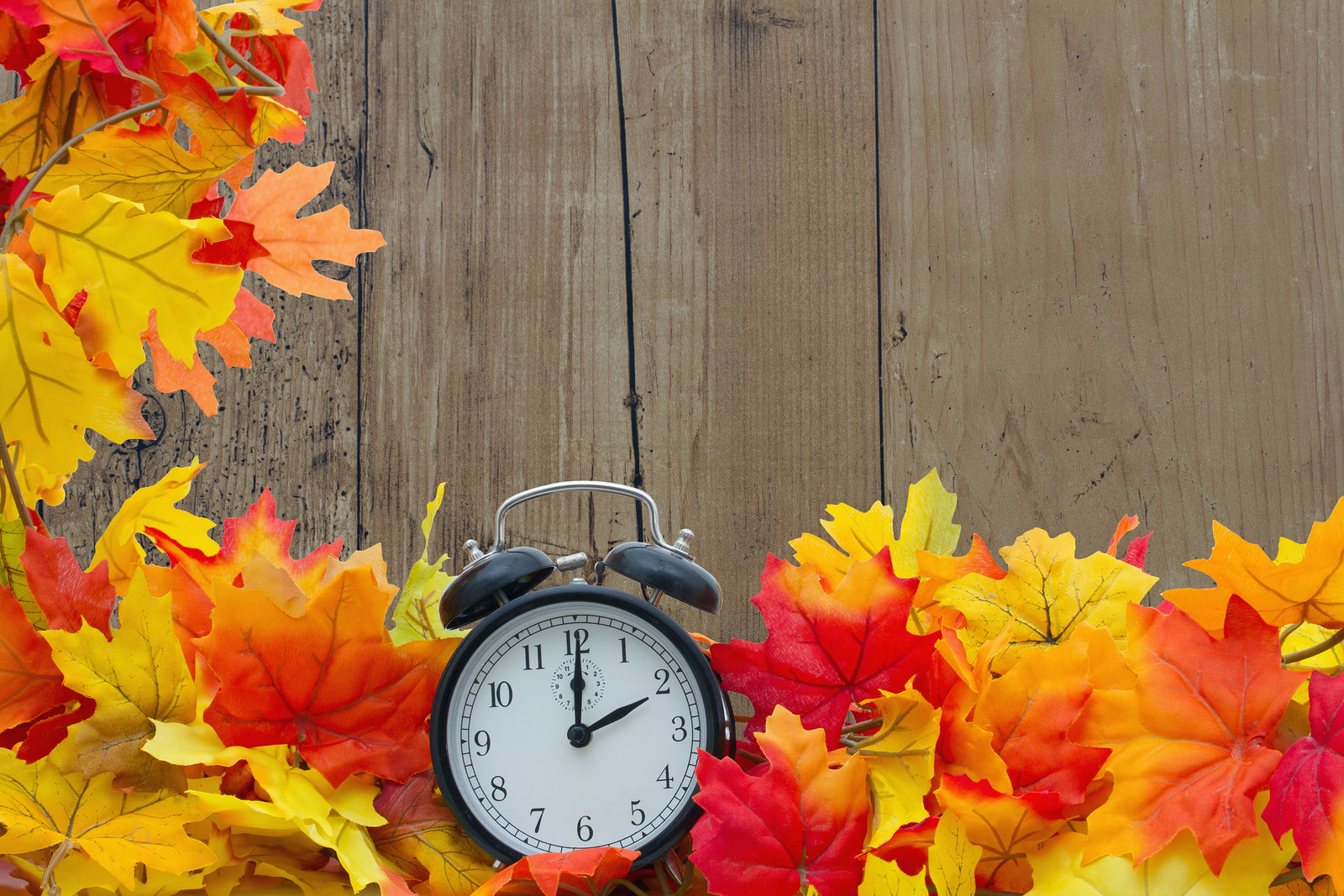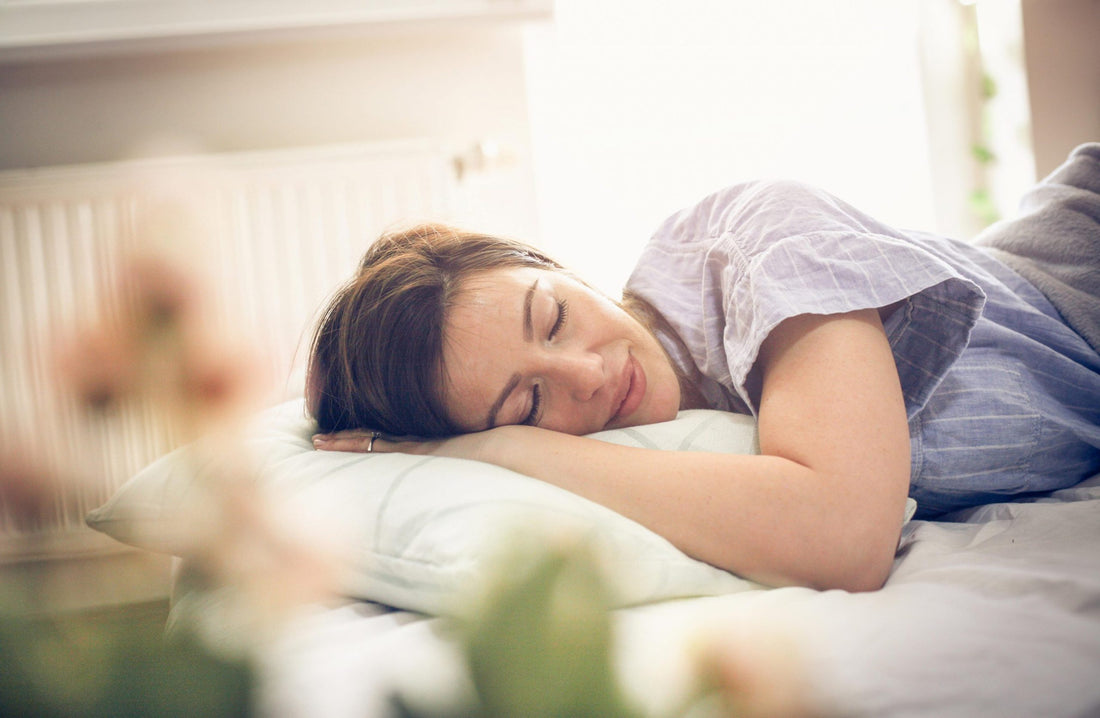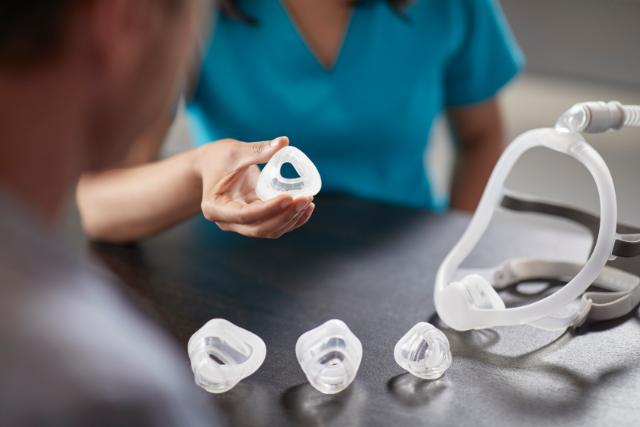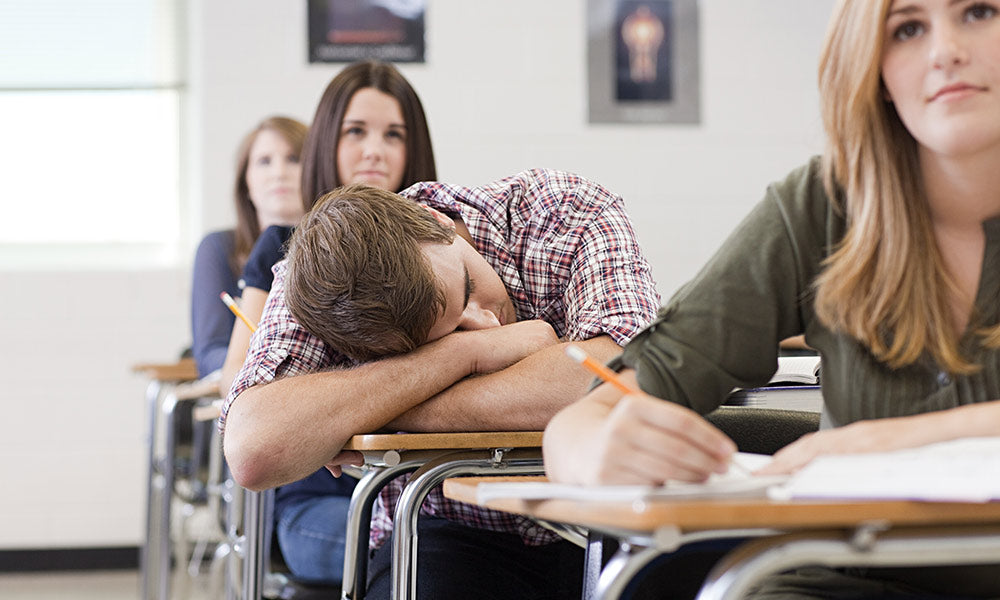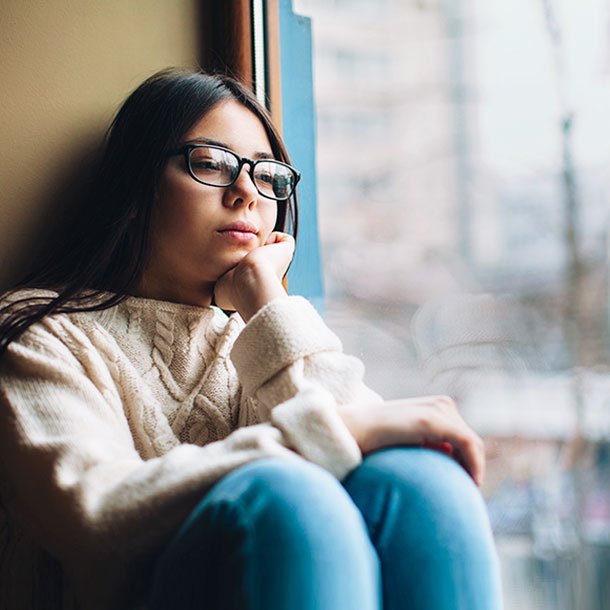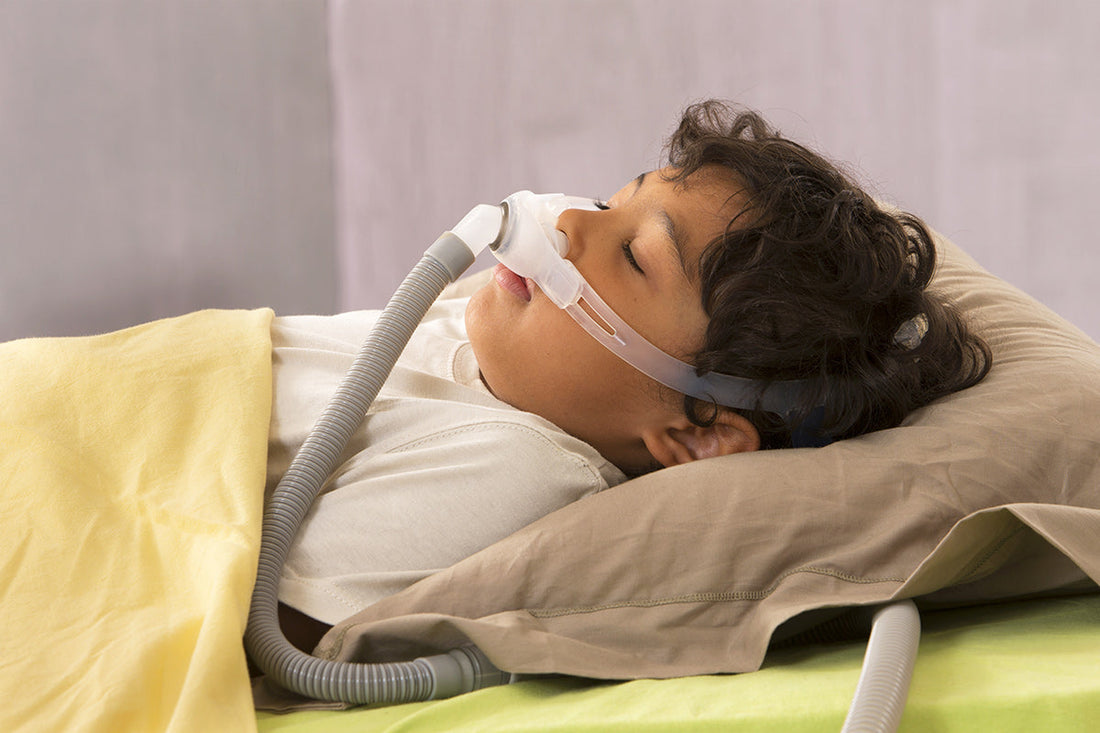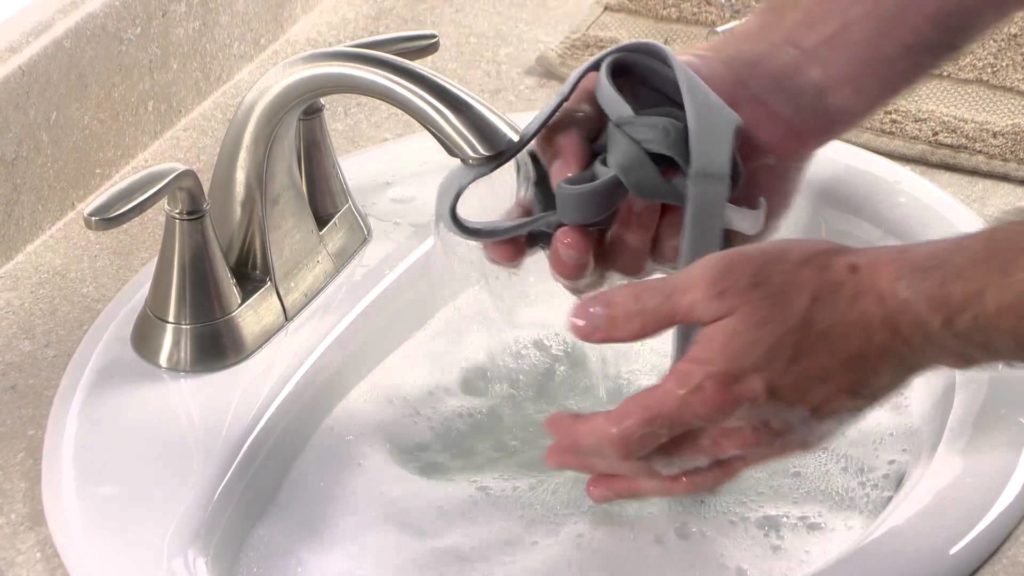News
Sleep Tips for Halloween Night!
wp:paragraph The spookiest night of the year is coming up in just a few short days. If you have kids, chances are, everyone’s sleep routine may be a little off that night thanks to all of the excitement surrounding Halloween. Whether you are going trick-or-treating with the kids or staying at home to hand out candy, here are a few tips to keep everyone’s sleep routines in check. /wp:paragraph wp:paragraph Plan ahead /wp:paragraph wp:paragraph Halloween can be overstimulating for children with all of the sights and sounds in addition to the outdoor physical activity from trick-or-treating. And oftentimes, the night tends to run a little later than usual. If possible, start your Halloween rituals earlier in the evening or the late afternoon, especially if you have small children. Taking a short nap in the daytime may also be beneficial for your child so that they are well rested for the evening’s festivities and not overstimulated. /wp:paragraph wp:paragraph Stick to your normal routines /wp:paragraph wp:paragraph While there is certainly a lot happening on Halloween, the best thing you can do for yourself or your children is to stick to as much of a normal routine as possible. Maintain the same bedtime, follow the same sleep routine, and stick to healthy diet and exercise habits during the daytime. It will help to give your child some time to read or do a quiet activity before bedtime to help them wind down from the day’s events. /wp:paragraph wp:paragraph Go easy on the treats /wp:paragraph wp:paragraph It’s easy to want to let your kids indulge in their Halloween candy or to sneak a treat or two for yourself, but be careful. Too much candy can interfere negatively with your sleep, especially close to bedtime. Have your child pick out just a few small packages of their favorite candy and leave the rest for another day. /wp:paragraph wp:paragraph Have fun! /wp:paragraph wp:paragraph Remember that Halloween only falls on one night each year and slip-ups can happen. Maybe you or your children ate a little too much candy before bed or maybe bedtime happens a little later than normal. If your schedule is off, don’t sweat it! Be sure to get back on track the next night. /wp:paragraph
about Sleep Tips for Halloween Night!Are Changes in the Weather Affecting your Sleep?
wp:paragraph Now that the weather outside is becoming cooler and the hot summer nights are behind us for another year, you may find that some of your sleep habits are a little different these days. This is completely normal. /wp:paragraph wp:paragraph Your body does a lot of work in regulating your 24-hour sleep-wake cycle and the temperature outside actually has more of an effect on your sleep than you may think. Regulating your body temperature while sleeping is incredibly important for a good sleep overall, but all of the changes in the weather can affect your internal clock and melatonin production more than you think. Here are a few ways that you may find your sleep is affected by the weather. /wp:paragraph wp:paragraph Cooler nights /wp:paragraph wp:paragraph Now that fall is officially here, so are the cooler nights. While experts recommend slightly cooler temperatures for sleeping in general, it is important to find a happy medium. You don’t want to find yourself so cold that you are shivering or uncomfortable. Don’t be afraid to put the heat on at night or put on an extra layer just to be comfortable while sleeping. /wp:paragraph wp:paragraph Shorter Days /wp:paragraph wp:paragraph Now that it gets darker earlier, you may find you are either feeling tired earlier, or you are having trouble sleeping. Seasonal Affective Disorder (SAD) is also common around this time thanks to the shorter hours of sunlight. Sticking to a regular bedtime and getting as much sunlight as you can during the daytime will help with this. Make sure you are also getting regular exercise in as well. /wp:paragraph wp:paragraph Changes in air pressure /wp:paragraph wp:paragraph If you are finding yourself waking up with mild headaches, body aches, or very minor cold-like symptoms, you are not alone. Whenever there is a change in barometric pressure (which is the change in the weight of the air that occurs whenever there are drastic weather changes) it can take your body some time to adjust. Fatigue is extremely common because of this, as are the symptoms mentioned above. Just know that this will pass, and make sure you practice good sleep hygiene to help with this. /wp:paragraph
about Are Changes in the Weather Affecting your Sleep?Does Insurance Cover Your CPAP Machine?
wp:paragraph If you suffer from sleep apnea and use CPAP therapy to help you sleep at night, then you will probably know that the machine and all of the necessary parts for it can be extremely costly. /wp:paragraph wp:paragraph Your sleep is vital to your overall well-being, therefore investing in it is worthwhile, however, your wallet may not be feeling the same way. Luckily, you may be able to get some or all of the costs of CPAP therapy covered by health insurance or government assistance programs, but it is important to do your research and double-check to see whether this is something that applies to you or not. /wp:paragraph wp:paragraph What kind of coverage could I get? /wp:paragraph wp:paragraph Most provinces in Canada have programs in place that can assist with some or all of the cost of a CPAP device. In Ontario for example, there is a program run by the Ministry of Health called the Assistive Devices Program (ADP) which typically covers 75% of the costs of the CPAP machine and parts. Other provinces may only cover certain CPAP parts while others offer no coverage at all. You may also be eligible for some funding at a national level, such as Veterans Affairs. /wp:paragraph wp:paragraph If you have your own health insurance, there are many policies that can cover some or all of the costs of a CPAP device. Be sure to read your policy carefully and/or contact your insurance agent to find out what is covered and what is not. /wp:paragraph wp:paragraph What is required? /wp:paragraph wp:paragraph For any government-funded coverage, you will require a valid health card in your name. Also, you must have a prescription or a doctor's note stating that you have been diagnosed with sleep apnea and require a CPAP device for treatment. /wp:paragraph wp:paragraph What if I need a part replaced? /wp:paragraph wp:paragraph CPAP parts do wear out after some time and will need to be replaced, but only within a specific timeframe. Make sure you read into how often you are allowed to replace your parts and still have it covered. /wp:paragraph wp:paragraph Hold on to ALL receipts from the purchases of any new CPAP parts, even if it’s covered. It will also help to write down the dates that the parts were purchased, that way you can keep track of how long you have had each part and when it is time for them to be replaced. Keeping your CPAP machine and parts clean on a regular basis will help to extend their lifespan as well! /wp:paragraph wp:paragraph Be sure to visit papsmart.com for your CPAP therapy needs. /wp:paragraph
about Does Insurance Cover Your CPAP Machine?Is your Teen Getting Enough Sleep?
wp:paragraph Teenagers can be known for sleeping very long hours, but it doesn’t mean that they are lazy. Teens actually need more sleep than adults as they are going through a significant period of growth and transition at that stage in life. Teens in the age 12-18 category can be very busy between school, extra-curricular activities, part-time jobs, and maintaining a social life. /wp:paragraph wp:paragraph Experts recommend at least 8-10 hours of sleep per night for teenagers, but most teens actually get less sleep than that. Many teens are what you would refer to as “night owls,” and prefer staying up late and sleeping the day away, but this is not necessarily a good thing. /wp:paragraph wp:paragraph Why do teens need more sleep? /wp:paragraph wp:paragraph There are many reasons for this. It is important to remember that teens’ brains are developing and changing significantly in the adolescent years, and this will have an effect on their thinking, emotions, behavior, and interpersonal relationships. Much like diet and exercise, sleep is important for the overall function of anyone, but especially for teenagers as they transition into adulthood. /wp:paragraph wp:paragraph Navigating a late bedtime with an early school start time is no fun, and teens need the proper amount of sleep in order to be able to focus on school and everything else in their life. Poor concentration due to lack of sleep can, unfortunately, lead to many mental health issues for teens, which is why sleep is so important. /wp:paragraph wp:paragraph How to help your teen get a good night’s sleep /wp:paragraph wp:paragraph While your teen may fight you on wanting to stay up late, it is important to encourage them to get to bed at a reasonable time, especially if they have school the next day. Practicing good sleep hygiene habits is important to make the most out of their sleep, including keeping the room cool and dark. /wp:paragraph wp:paragraph Also, while many teens tend to be attached to their electronic devices for most of the day, it is important to limit the use of technology, or stop it all together right before bedtime as the blue light from the devices can cause disruptions with their REM sleep, which is vital to getting a good night’s sleep. /wp:paragraph
about Is your Teen Getting Enough Sleep?Breast Cancer and Sleep Apnea
wp:paragraph October is breast cancer awareness month, and there are many initiatives happening to raise awareness for this devastating disease. Breast cancer affects thousands of women in Canada every year, and chances are, you may know someone who has been affected by it. Did you know that sleep disorders, including sleep apnea, can increase your risk of developing breast cancer long-term? /wp:paragraph wp:paragraph The link between breast cancer and sleep apnea /wp:paragraph wp:paragraph Although it’s not really talked about a lot, many studies completed over the years have shown that there is indeed a connection between breast cancer and poor sleep in general, including insomnia and Obstructive Sleep Apnea. While OSA is more common among men, don’t forget that OSA still affects many women each year. And for women over age 30, the chance of developing breast cancer does increase for those with sleep apnea, especially if it is left untreated. /wp:paragraph wp:paragraph While this may sound scary, especially with the young age gap, it may help to know that taking steps to improve your sleep can help to lower your risk of developing breast cancer. /wp:paragraph wp:paragraph How to lower your risk for breast cancer /wp:paragraph wp:paragraph If you have symptoms of sleep apnea, or if you are dealing with chronic insomnia, be sure to speak to your doctor to get the proper treatment. This is extremely important as this will help to lower your risk for a lot of long-term health problems, including cancer. /wp:paragraph wp:paragraph Ladies, don’t skip your regular mammograms and checkups! This can be crucial in screening for breast cancer. Completing regular breast exams at home is important as well, and if something doesn’t feel right, speak to your doctor. Early detection is easier to treat than if it is caught in the later stages. /wp:paragraph wp:paragraph Finally, practicing good sleep habits is very important to getting a good sleep every night, which in turn will be beneficial for staying healthy long term. /wp:paragraph
about Breast Cancer and Sleep ApneaHow Seasonal Affective Disorder Disrupts your Sleep
wp:paragraph Seasonal Affective Disorder (otherwise known as SAD) is a form of depression that typically occurs each year around the time when the seasons' transition. A lot of this is because of the shorter hours of sunlight, which can lead to a hormonal imbalance. This is extremely common in the fall months, and lots of people are finding that their sleep habits are being affected by SAD. /wp:paragraph wp:paragraph How SAD can affect your sleep /wp:paragraph wp:paragraph A few of the common symptoms of SAD include mood swings, anxiety, sadness, decreased interest in activities, and social withdrawal. SAD can also affect your sleep in many ways as reduced sunlight can disrupt your biological clock, which in turn can affect your sleep cycle. Many SAD patients find themselves experiencing insomnia or restless nights, or they are sleeping for longer than normal. This can also affect how you function during the daytime and can lead to difficulty concentrating, feeling sluggish or tired, and having low energy. /wp:paragraph wp:paragraph How SAD patients can get a better sleep /wp:paragraph wp:paragraph If your SAD symptoms have reached the point where your mood is down for as much as several days, you have no motivation to do activities you normally enjoy, or your sleep patterns have changed drastically, then you should speak to your doctor for further treatment. They may recommend medication, cognitive behavioral therapy, or light therapy. /wp:paragraph wp:paragraph A few other ways that you can get better sleep without medical intervention include maintaining the practice of good sleeping habits; stick to the same bedtime, keep your bedroom an inviting place to sleep, and limit the use of technology before bedtime. You can also try taking melatonin before bedtime to help reset your sleep cycle. Keeping up with good habits during the daytime, including a healthy diet and exercise, can also be helpful. /wp:paragraph wp:paragraph Finally, get outside! Go for a walk in the daytime before it gets dark. Getting in some sunlight can be extremely beneficial to your internal clock. /wp:paragraph
about How Seasonal Affective Disorder Disrupts your SleepIs Smoking Making your Sleep Worse?
wp:paragraph You probably know that smoking cigarette can have a negative impact on your overall health, but did you know that smoking can be the cause of many sleep problems for adults? /wp:paragraph wp:paragraph The effect of smoking cigarettes on sleep /wp:paragraph wp:paragraph Smoking cigarettes can not only affect your body’s internal clock in a negative way, but it can also raise your risk of developing sleep apnea and can also cause your sleep to be fragmented, meaning your overall sleep is restless, or you experience insomnia. /wp:paragraph wp:paragraph This is because of nicotine, which is the active ingredient found in cigarettes. Nicotine has been known to have a stimulating effect, but not one that is beneficial for sleeping. Cigarette smoking has been known to temporarily reduce anxiety and help people to feel more awake and alert. This is, however, a temporary effect, which is not exactly beneficial for getting a well-rested sleep at night. /wp:paragraph wp:paragraph For this reason, doctors typically advise against smoking if patients are experiencing sleep problems. /wp:paragraph wp:paragraph If you are planning on quitting smoking /wp:paragraph wp:paragraph Quitting smoking is not easy and can take some time. It is best to speak to your doctor if you plan on quitting smoking, as they can help you come up with a plan that works best for you and your overall health. /wp:paragraph wp:paragraph While the process of quitting smoking may be frustrating, it is important to remember that the long-term effects can be extremely beneficial for your sleep. In fact, sleep apnea patients who quit smoking after being diagnosed have reported substantial improvements in their sleep quality from quitting smoking. /wp:paragraph wp:paragraph Don’t expect your sleep to improve right away. Typically, the first few days of quitting can have some unpleasant side effects, and the withdrawal symptoms can continue towards the evening hours when it’s time for bed. Be prepared for the fact that you may experience a few sleepless nights in addition to the cravings and irritability. Make sure you surround yourself with a good support system, practice good sleep hygiene, and be patient. /wp:paragraph
about Is Smoking Making your Sleep Worse?Sleep Apnea in Children
Think sleep apnea doesn’t affect children? Think again. While it is not as common, children can occasionally be affected by a sleep disorder called pediatric obstructive sleep apnea. OSA in children may look a little different in children than it does for adults, however, it is important to remember that children require a good night’s sleep to help aid their growing bodies. Because of this, seeking medical help is very important in order to treat sleep apnea symptoms. Causes and Risk Factors Some of the most common risk factors for sleep apnea in children include enlarged tonsils and adenoids, obesity, and underlying health conditions such as Down Syndrome, Cerebral Palsy, and craniofacial abnormalities, just to name a few. Some children may also develop OSA, simply based on family history of the condition. Symptoms to Watch Much like adults, children who have OSA may experience symptoms such as snoring, restless sleep, pauses in breathing, and coughing or choking. Occasionally children may have other symptoms such as night sweats, bed-wetting, or sleep terrors. Untreated OSA in children can also have an effect on how a child functions during the daytime, including learning and/or behavioral problems, hyperactivity, poor weight gain as well as poor performance in school, and difficulty paying attention. Treatment OSA treatment in children will depend on many factors. Your doctor may refer your child to a sleep specialist for further examination of their symptoms. Managing weight in children with obesity issues will often help to treat mild cases of sleep apnea in children. Children with enlarged tonsils and/or adenoids may require surgery in order to treat the sleep apnea. Some cases may even require the use of a CPAP machine to treat the sleep apnea, whether temporary or permanent, though this is not as common for children as it is in adults. Early diagnosis and treatment are key to preventing complications that could affect the child’s growth and development. If your child consistently wakes up feeling tired or is experiencing problems functioning during the daytime, then it’s time to call your doctor. Left untreated, OSA in children can lead to some serious health problems that could cause issues with their growth and development.
about Sleep Apnea in ChildrenGetting your CPAP Ready for the Fall Season
wp:paragraph Now that the weather is slowly starting to transition into the cooler fall temperatures, the nights are now getting cooler. The fall can be a fantastic time to make sure your CPAP machine is in perfect working condition. This is to ensure your sleep apnea is being treated and you have a good night’s sleep without any interruptions. /wp:paragraph wp:paragraph Here are a few ways to get your CPAP machine ready for the fall months; /wp:paragraph wp:paragraph Give your CPAP a deep clean /wp:paragraph wp:paragraph While cleaning your CPAP machine is recommended on a regular basis, doing a deep clean every so often can be extremely beneficial and can extend the life of some of the parts to your CPAP machine. It is best to clean the CPAP parts in the morning and leave them out to air dry so they are clean and dry once it’s time for bed. Do not leave any parts in direct sunlight and do not use bleach to clean your CPAP. /wp:paragraph wp:paragraph Take inventory of your CPAP parts /wp:paragraph wp:paragraph The fall can be an excellent time to take inventory on any parts that may be starting to wear down. Many items such as the mask cushions, tubing, headgear, and/or chin straps (if applicable) do have a life span. If you find these are starting to wear down, then now is the perfect time to be replacing these parts. It is also helpful to check the machine itself; if the cords are starting to wear down or the machine is not working to its full potential, you may need to think about replacing it. Check out www.papsmart.com for any CPAP parts you need. /wp:paragraph wp:paragraph Double-check the CPAP humidifier /wp:paragraph wp:paragraph Now that the nights are cooler, you may find yourself making use of the humidifier more often than before. Be sure to check the humidifier filters at least once a week. If they are dirty or discolored, then it is time to replace them or clean them (if they are not disposable). The humidifier can be a fantastic addition to your CPAP, especially in the cooler months, so it is important to make sure it is in perfect working condition. /wp:paragraph
about Getting your CPAP Ready for the Fall Season